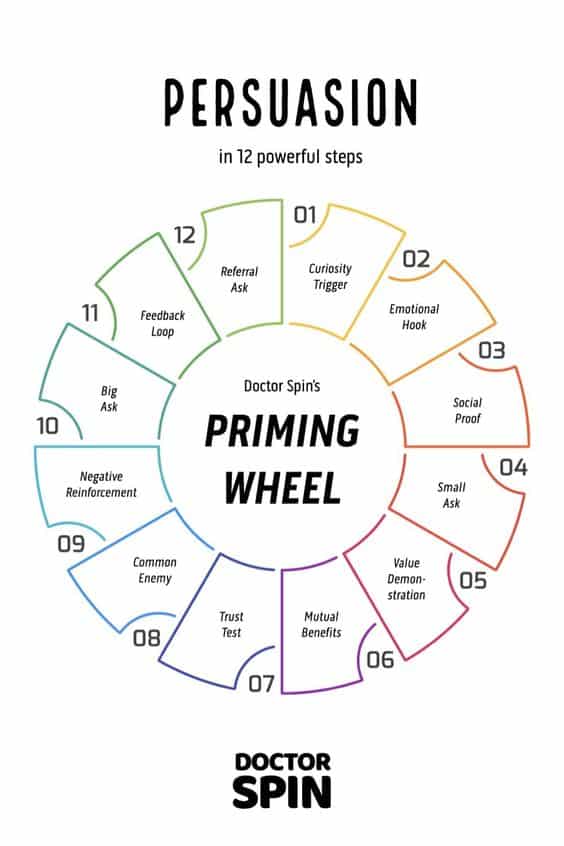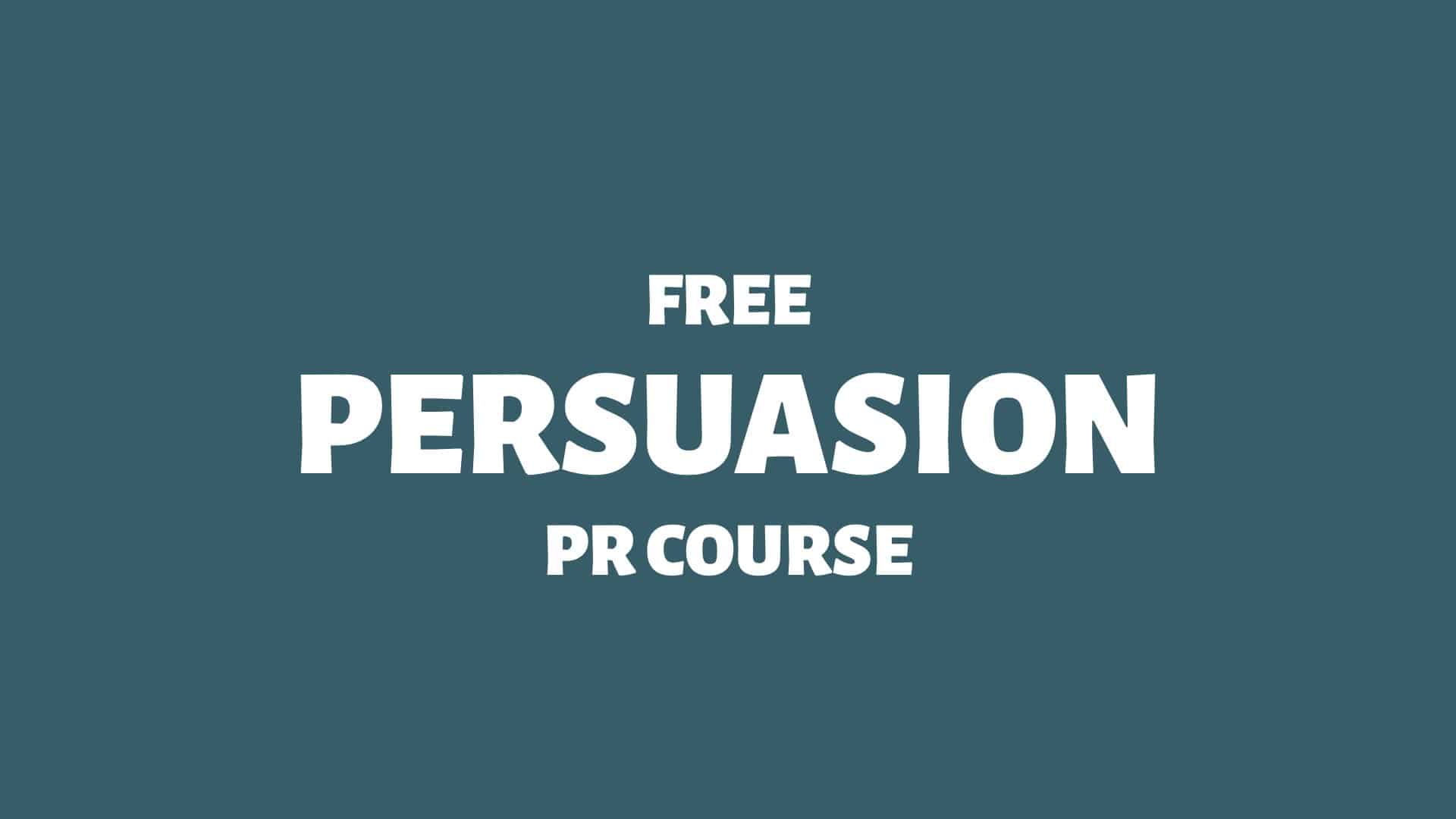The Priming Wheel aims to inspire multi-step persuasion.
With its 12-step approach, the Priming Wheel exemplifies multiple touchpoints inspired by “Pre-Suasion,” Robert Cialdini’s framework for shaping receptivity before the actual persuasion attempt is made. 1Cialdini, R. (2017, April 20). Pre-Suasion: A Revolutionary Way to Influence and Persuade. Amazon.co.uk. https://www.amazon.co.uk/Pre-Suasion-Revolutionary-Way-Influence-Persuade/dp/1847941435/
Each priming step reinforces the previous one, creating a stronger, more resilient foundation for the persuasive message.
Here we go:
The Priming Wheel: Lay the Groundwork
The Priming Wheel: 12 Steps To Yes
Persuasion is often a journey rather than a one-off event.
Priming (in persuasion) = the proactive process of moving an audience into an actionable state of mind through multiple PR activities in a pre-planned sequence.
The priming wheel is not just a linear progression of arguments but a layered approach that addresses different aspects of the recipient’s rational, emotional, social, and ethical decision-making process.
It’s a type of yes ladder structure:

Each touchpoint in the priming wheel serves as a strategic moment to subtly influence and prepare the recipient’s mindset, making them more amenable to the final message or call to action.
The golden rule of persuasion is to lay the groundwork; never suggest anything to anyone who isn’t ready to comply — yet.
Of course, you can pick and choose relevant priming steps for your PR activity — and even arrange them differently to fit your product/service and narrative:
The priming wheel’s multi-touchpoint strategy is not just about delivering information; it’s about creating a mental and emotional environment where the final message is deeply felt and understood, leading to a more profound and lasting impact.
“The best persuaders become the best through pre-suasion — the process of arranging for recipients to be receptive to a message before they encounter it.”
— Robert Cialdini (author of Pre-Suasion) 2Cialdini, R. (2017, April 20). Pre-Suasion: A Revolutionary Way to Influence and Persuade. Amazon.co.uk. https://www.amazon.co.uk/Pre-Suasion-Revolutionary-Way-Influence-Persuade/dp/1847941435/
Learn more: The Priming Wheel: 12 Steps to Yes

THANKS FOR READING.
Need PR help? Hire me here.

PR Resource: Persuasion
Spin Academy | Online PR Courses

Spin’s PR School: Free Persuasion PR Course
Use this free Persuasion PR Course to elevate your public relations game with powerful insights. Drive impact and influence like never before.
Persuasion 101
Advanced Persuasion
Propaganda
Learn more: All Free PR Courses
💡 Subscribe and get a free ebook on how to get better PR.

Annotations
| 1 | Cialdini, R. (2017, April 20). Pre-Suasion: A Revolutionary Way to Influence and Persuade. Amazon.co.uk. https://www.amazon.co.uk/Pre-Suasion-Revolutionary-Way-Influence-Persuade/dp/1847941435/ |
|---|---|
| 2 | Cialdini, R. (2017, April 20). Pre-Suasion: A Revolutionary Way to Influence and Persuade. Amazon.co.uk. https://www.amazon.co.uk/Pre-Suasion-Revolutionary-Way-Influence-Persuade/dp/1847941435/ |


